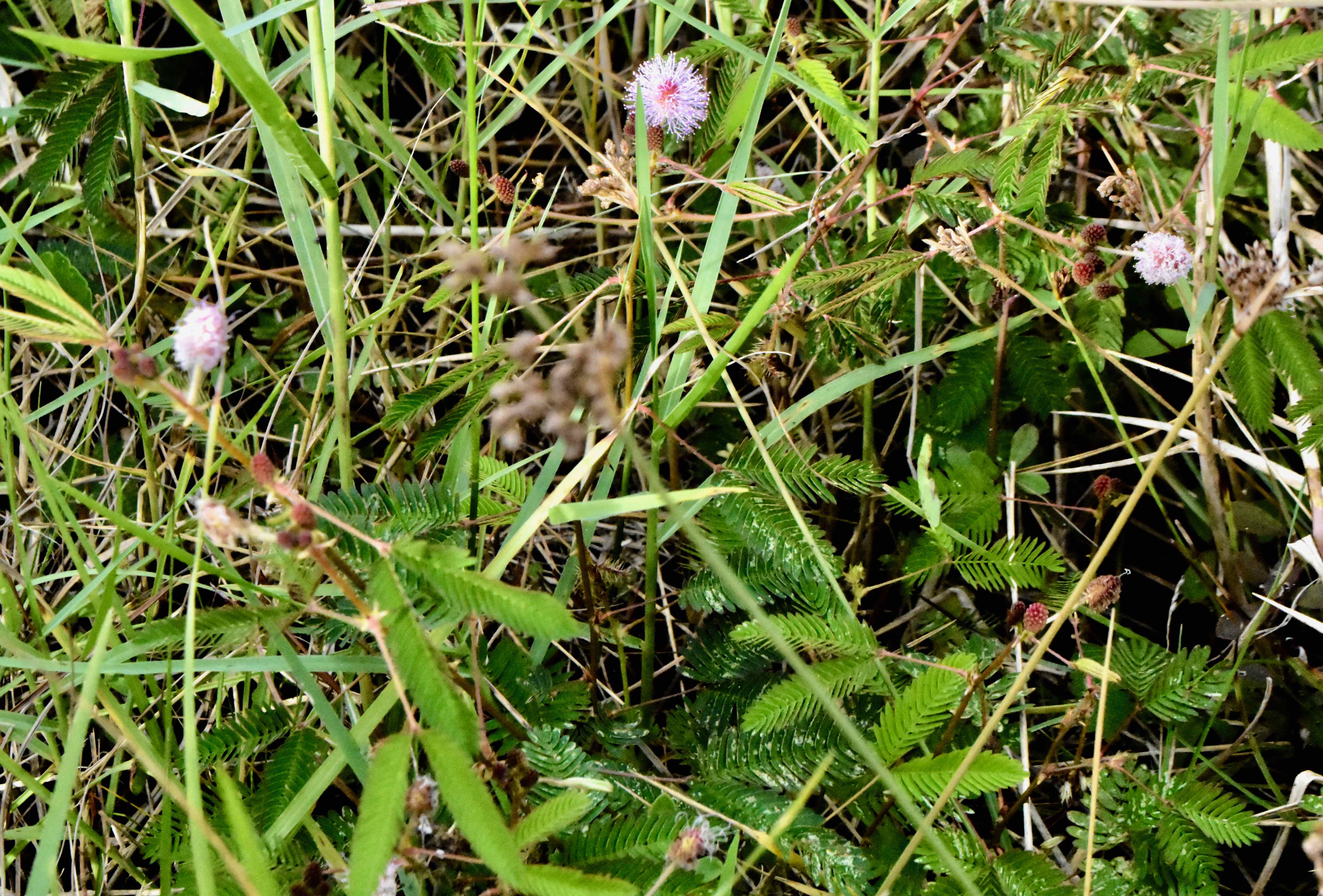
Sensitive briar, photographed at Jonathan Dickinson State Park, Hobe Sound, Martin County, in December 2020.
One species or two? Nasty or nice? As for the answer to the first question, depends on who you ask. As for the second, depends on whether you're caught in it or merely admiring its beautiful powder puff flowers.
According to both the Institute for Regional Conservation and the authoritative Florida Atlas of Vascular Plants, this is one species with two varieties, Mimosa quadrivalvis var. angustata and M. quadrivalvis var. Floridana.
Uncle Sam, aka the United States Department of Agriculture, considers sensitive plant to be split into two species, Mimosa quadrivalvis (Florida sensitive) and Mimosa microphylla (sensitive plant).
We'll leave it to the experts to sort this one out. Regardless, they're similar enough in appearance and habitat that it's difficult to tell them apart.
They're also both native to Florida and rare in South Florida, according to the IRC. In fact the IRC considers Florida sensitive briar to be imperiled. Neither variety (or species, if you prefer) is listed as threatened or endangered by any agency to our knowledge.

Both are small, woody vines, with compound leaves typical of mimosas. They get the sensitive part of their names from their reaction when their leaves are touched: they fold up and close. They also fold on cloudy days and at night. The flower heads are a bold pink, small but in large, round clusters that look like powder puffs. The stems are covered with numerous, sharp, curved thorns, which would be nasty to deal with if you encountered them unaware while were moving cross country through thickets. On the other hand, the flowers loudly announce the plant's presense.
Habitat for both plants/varieties include dry, sunny places such as open woods.
The two plants do have different ranges. Florida sensitive is limited to Florida, Georgia, Texas and Kentucky. In Florida, it tends to be more of an east coast plant, including Martin and Palm Beach counties. It's also found in Central Florida.
Angustata is found throughout the Peninsula and Panhandle, but tends to be more of a west coast plant. It's also found in most of the southeastern United States plus Illinois and Kansas.
Other names for Angustata include smoothleaf sensitive plant, catclaw sensitive plant, pink sensitive plant, shame vine and littleleaf sensitive plant.
Whether it's two varieties of the same plant or different species, sensitive plant unambiguously is a member of Fabaceae, the pea family.
Jonathan Dickinson State Park



